Silverline 633636 Handleiding
Silverline
Niet gecategoriseerd
633636
Bekijk gratis de handleiding van Silverline 633636 (3 pagina’s), behorend tot de categorie Niet gecategoriseerd. Deze gids werd als nuttig beoordeeld door 265 mensen en kreeg gemiddeld 4.4 sterren uit 133 reviews. Heb je een vraag over Silverline 633636 of wil je andere gebruikers van dit product iets vragen? Stel een vraag
Pagina 1/3

633636
4.5m x 50mm
Tow Rope 3 Tonne
• A vehicle with power-assisted steering being towed with the engine off will be more difficult and
require greater effort to steer
• It may be necessary to charge the battery before towing to ensure there is sufficient charge for lights,
indicators etc. for the length of the journey
• Keep all power requirements to the bare minimum in the towed vehicle if the engine is off. Do not
operate the heating, fans or audio system
• If towing a vehicle with the engine running ensure that it is safe to do so. A fault in either a manual or
automatic gearbox could cause an accident if it causes the gearbox to engage unexpectedly taking
the vehicle out of the neutral position
• Do not attempt to attach the tow strap when close to traffic flow. Move vehicles off the road where
possible. Do not attempt to connect vehicles on steep slopes or slippery ground
• Ensure the vehicle being towed is displaying a full range of indicator, brake and marker lights
• Only connect the tow strap to proper towing points. Do not use tow points with evidence of damage
/ heavy rust
• Place an ‘ON TOW’ marker in a clearly visible position on the rear of the vehicle being towed
• Do not tow a vehicle with defective brakes or steering
• Do not tow an unmanned vehicle
• Do not tow in poor light/visibility
• Do not tow in adverse weather. Snow, ice, strong wind and heavy rain will reduce vehicle control
• The drivers of the towed and the towing vehicle should be familiar with how the towed vehicle brakes
when being towed especially if the engine is off
• It is the responsibility of the driver of the towing vehicle to ensure that all legal requirements are met
• The weight of the towing vehicle must always be greater than that of the vehicle being towed
• This tow strap is not designed for pulling vehicles which have increased resistance to being moved,
such as vehicles that are in ditches or trapped in mud. In these conditions the maximum load capacity
of the strap will be easily exceeded and the tow strap will fail
• Avoid ‘snatch loads’ where the weight of the towed vehicle is abruptly applied to the tow strap which
can damage it, making it unsafe to use
• Avoid steep slopes and sharp cornering. These will place excessive strain on the towing strap
Product Familiarisation
1) Hook
2) Safety Bar
3) Tow Strap
Specification
Size: 4.5m x 50mm
Max Load Capacity: 3 Tonne
As part of our ongoing product development, specifications of Silverline products may alter without
notice
Before Use
WARNING: You must comply with national regulations in your country for towing vehicles including
speed limits and visible warnings to indicate a vehicle is being towed. If in doubt, contact your national
road authority.
WARNING: Cat. B car driving licences issued after 1st Jan 1997 in the UK have a restriction for vehicle
weight including towed weight of 4250kg. Licences issued after 19th January 2013 are restricted to
3500kg. Ensure your driving licence permits towing the combined weight of the two vehicles.
WARNING: Check the owner’s manuals of both vehicles as not all vehicles can be towed or can tow
other vehicles. Some cars with automatic gearboxes cannot be towed or have additional restrictions.
• This towing strap has a maximum safe towing capacity of 3 tonnes. This figure is based on the total
weight of the towed vehicle including passengers, fuel, luggage etc. Sharp acceleration or braking,
and steep gradients, may cause the towing strap to be overloaded
• Be aware of road traffic laws before attempting to tow any vehicle on a public road. This product must
only be used where it is safe and legal to do so
• Check that your insurance covers recovery towing
• A car driving licence is required for the person steering and controlling the towed vehicle. If the driver
only has a provisional licence, ‘L’ plates must be displayed in the UK
• Both the tow vehicle, and the vehicle being towed, must be fully road legal, with current MOT, tax and
insurance, if they are to use public roads
Operation
Safe Towing
• Read these instructions in combination with the owner’s manuals for both vehicles for manufacturer’s
towing information especially braking information
• Gardez les besoins en énergie au minimum dans le véhicule remorqué, si le moteur n’est pas en
marche. Ne faites pas marcher le chauffage, la ventilation ou le système audio.
• Si un véhicule est remorqué avec un moteur en marche, assurez-vous que cela ne pose pas de
problème de sécurité. Une erreur sur une boite de vitesse manuelle ou automatique peut provoquer
un accident si la boite de vitesse se désengage du point mort.
• Assurez –vous que les feux de détresse, feux arrières et feux stop fonctionnent.
• Reliez la sangle de remorquage aux anneaux de remorquage prévus à cet effet, et à eux seuls.
N’utilisez pas un anneau de remorquage présentant des signes évidents de corrosion ou
d’endommagement.
• Ne remorquez pas un véhicule dont les freins ou la direction sont défectueux.
• Ne remorquez pas un véhicule sans conducteur.
• Ne remorquez pas un véhicule si la visibilité est réduite.
• Ne remorquez pas un véhicule si le temps est très mauvais. En effet, la neige, le verglas, les vents
violents et les fortes pluies réduisent le contrôle du véhicule.
• Évitez d’emprunter les routes très pentues ou très sinueuses. Dans un cas comme dans l’autre, les
contraintes sur la sangle de remorquage peuvent être excessives.
• Le poids du véhicule tracteur doit être supérieur au poids du véhicule remorqué.
• Cette sangle de remorquage n’est pas conçue pour remorquer des véhicules nécessitant une plus
grande force de résistance pour être déplacés, tel que des véhicules dans un fossé ou enlisé dans la
boue. Dans ces conditions, la capacité de charge maximale peut être largement dépassée et rendre
l’utilisation de la sangle inutile et dangereuse.
• Evitez une mise sous tension brusque de la sangle car le poids du véhicule remorque qui s’applique
sur la sangle peut l’endommager et rendre son utilisation dangereuse.
• Évitez d’emprunter les routes très pentues ou très sinueuses. Dans un cas comme dans l’autre, les
contraintes sur la sangle de remorquage peuvent être excessives
Fixation
• Disposez toujours les crochets de manière à ce qu’ils soient orientés vers le bas.
• Vérifiez toujours que le linguet (2) de chaque crochet (1) soit bien refermé de manière à empêcher
tout décrochage accidentel durant l’utilisation.
1. Installez un crochet (1) sur un anneau de remorquage de l’un des véhicules.
2. Vérifiez que le linguet (2) de chacun des crochets soit bien refermé.
Se familiariser avec le
produit
1) Crochet
2) Linguet de sécurité
3) Sangle de remorquage
Caractéristiques techniques
Dimensions : 4,5 m x 50 mm
Capacité maximale de charge : 3 tonnes
Du fait de l’évolution constante de nos produits, les caractéristiques des produits Silverline peuvent
changer sans notification préalable
Avant utilisation
ATTENTION : Vous devez respecter les régulations nationales de votre pays en ce qui concerne le remorquage
des véhicules telles que celles sur les limites de vitesse, et des signalisations indiquant le remorquage d’un
véhicule. En cas de doute, contactez les services de la sécurité routière.
ATTENTION : Vérifiez bien les manuels d’instructions des deux véhicules, car tous les véhicules
ne peuvent pas remorquer ou être remorqués par d’autres véhicules. Quelques voitures à vitesse
automatique ne peuvent pas être remorquées ou avoir d’autres restrictions.
• La capacité maximum de cette sangle de remorquage est de 3 tonnes. Cette limite comprend le poids
total du véhicule remorqué en l’état, c’est-à-dire avec son chargement, ses passagers, son carburant,
etc. Des accélérations ou des freinages brusques, ainsi que la conduite sur une route à forte pente,
peuvent provoquer une surcharge de la sangle.
• Tenez compte des prescriptions du code de la route avant de remorquer un véhicule sur une voie
publique. Cette sangle de remorquage ne doit être utilisée que dans le cas où cela ne présente aucun
danger, et en respectant la réglementation légale.
• Assurez-vous que la compagnie d’assurance couvre les risques inhérents à un remorquage.
Instructions d’utilisation
Consignes de sécurité sur le remorquage
• Lisez ces instructions et également celles des fabricants des deux voitures, en particulier les
informations relatives au freinage.
• Un véhicule avec une direction assistée avec un moteur éteint sera plus dur à diriger.
• Il peut être nécessaire de recharger la batterie avant le remorquage, pour être sûr que les clignotants,
phares, etc. puissent fonctionner tout au long du remorquage.
1
2
3
www.silverlinetools.com
Attaching to vehicles
• Always arrange the hooks to point downwards
• Always ensure the Safety Bar (2) on both Hooks (1) is closed so that the hooks cannot become
accidentally disengaged from the vehicle towing points
1. Engage the hooks in the towing points of the vehicles
2. Check that the Safety Bar (2) is closed on both hooks
Towing
WARNING: Towing can be difficult and is a frequent cause of accidents. These instructions are not
comprehensive. Seek further information or training if necessary.
IMPORTANT: IInspect the tow strap before every use to make sure it is not visibly worn or damaged
1. Switch on the ignition of the towed vehicle so the electrical circuits are powered and the steering lock
is off
2. Move the gear selector to the neutral (N) position. This can also be called ‘No gear’ on some
automatic vehicles
3. Start the engine of the towed vehicle if it is safe to do so
4. Release the handbrake of the towed vehicle
5. The towing vehicle should accelerate very slowly so that the towed vehicle starts to move gradually. It
should then accelerate to a speed of no more than 15mph (24km/h)
• The driver of the towed vehicle needs to make sure turn signals of the towing vehicle are duplicated
and that braking isn’t excessive to cause additional load to the towing vehicle and tow strap
• The driver of the towing vehicle should have special consideration for the towed vehicle and other
road users. This could be choosing a route that avoids busy junctions and provides good visibility. It
may be necessary to drive at a slightly different distance from the side of the road especially if the
towed vehicle is wider
• If for any reason you have to stop towing and the vehicles are causing an obstruction remember to
turn on the hazard warning lights on both vehicles while they are stationary
• Return the tow strap to its original packaging or another suitable container that will fully protect it
after use
Maintenance
• The tow strap should be kept clean to ensure good visibility when being used. The tow strap requires
no maintenance and is non-repairable. If it is visibly worn or damaged it must not be used and should
be disposed of immediately
Remorquage
ATTENTION : Le remorquage peut être dangereux et il est la cause d’accident. Ces instructions ne sont
pas exhaustives. Recherchez d’autres informations ou effectuez une formation si nécessaire.
IMPORTANT : Inspectez la sangle avant chaque utilisation et vérifiez bien qu’il n’y a pas de signes
visibles d’endommagement ou d’usure.
Entretien
• La sangle de remorquage doit être toujours propre pour qu’elle soit bien visible lors de son utilisation.
La sangle ne demande aucun entretien, et elle n’est pas réparable. En cas de constatation d’usure ou
d’endommagement, la sangle ne doit pas être utilisée et doit être immédiatement rejetée.
Tow Rope 3 Tonne
Sangle de remorquage 3 tonnes
Abschleppseil, 3 t
Correa para remolque 3 toneladas
Corda per trainare 3 tonnelate
Sleeptouw, 3 ton

• Bitte beachten Sie, dass sich Fahrzeuge mit Servolenkung, die bei abgeschaltetem Motor
abgeschleppt werden, schwerer lenken lassen.
• Unter Umständen muss vor dem Abschleppvorgang die Fahrzeugbatterie aufgeladen werden, damit
die Funktion von Blinkern, Scheinwerfern usw. über die gesamte Dauer des Abschleppvorgangs
sichergestellt ist.
• Beschränken Sie den Strombedarf im abgeschleppten Fahrzeug auf ein Minimum, wenn der Motor
abgeschaltet ist. Lassen Sie Heizung, Lüftung, Audioanlage usw. ausgeschaltet.
• Falls der Motor des abgeschleppten Fahrzeugs während des Vorgangs läuft, darf dadurch die
Sicherheit nicht gefährdet sein. Ein Defekt des Schalt- bzw. Automatikgetriebes stellt eine
Unfallgefahr dar, falls z.B. falls die Kupplung unerwartet einrastet.
• Bringen Sie das Abschleppseil nicht nahe dem Verkehrsstrom an. Stellen Sie beide Fahrzeuge nach
Möglichkeit abseits der Straße, jedoch nicht an steilen Hängen oder auf rutschigem Untergrund ab.
• Das abzuschleppende Fahrzeug muss über voll funktionsfähige Warnblink-, Abbiege- und
Bremsleuchten und ggf. Scheinwerfer verfügen.
• Befestigen Sie das Abschleppseil ausschließlich an dafür vorgesehenen Befestigungspunkten.
Verwenden Sie keine Befestigungspunkte, die Anzeichen von Beschädigungen oder Rost
aufweisen.
• Ein Fahrzeug mit defekter Bremse oder Lenkung darf nicht abgeschleppt werden.
• Ein führerloses Fahrzeug darf nicht abgeschleppt werden.
• Abschleppvorgänge sind nur bei guten Licht-/Sichtverhältnissen durchzuführen.
• Abschleppvorgänge dürfen nicht bei schlechten Witterungsbedingungen vorgenommen werden.
Schnee, Eis, starker Wind und heftiger Regen schränken die Kontrolle über die Fahrzeuge ein.
• Die Fahrer beider Fahrzeuge müssen mit dem – insbesondere bei abgeschaltetem Motor –
veränderten Bremsverhalten des abgeschleppten Fahrzeugs vertraut sein.
• Das Gewicht des abschleppenden Fahrzeugs muss stets größer als das Gewicht des
abzuschleppenden Fahrzeugs sein.
• Tenga en cuenta que los vehículos remolcados con dirección asistida y el motor apagado presentarán
mayores dificultades para mover la dirección.
• Puede que sea necesario recargar la batería del vehículo para asegurarse de que este pueda realizar
todo el trayecto con todas las luces indicadoras encendidas.
• Mantenga todas las funciones no esenciales del vehículo apagadas o al mínimo cuando el motor esté
apagado. No encienda la calefacción, el ventilador o el equipo de audio.
• Tenga precaución cuando el vehículo remolcado tenga el motor encendido, compruebe que no sea
peligroso. Un fallo en la caja de cambios podría bloquear el vehículo y provocar un accidente.
• Nunca intente colocar la correa de remolque cerca de tráfico intenso. Si es posible, mueva el vehículo
lo más lejos posible de la carretera. No intente remolcar vehículos en pendientes o superficies
resbaladizas.
• Asegúrese de que el vehículo remolcado tenga todas las luces indicadoras encendidas, incluidas las
luces de frenos y luces de posición.
• La correa para remolque sólo debe acoplarse a los puntos de remolque previstos para ello. No use
puntos de remolque que muestren señales de daño o corrosión intensos.
• No remolque un vehículo con frenos o dirección defectuosos.
• No remolque un vehículo sin conductor.
• No remolque un vehículo si las condiciones de luz / visibilidad son malas.
• No remolque un vehículo en condiciones meteorológicas adversas. El control del vehículo se reducirá
en condiciones de nieve, hielo, viento fuerte y lluvia torrencial.
• Los conductores de ambos vehículos deben estar familiarizados sobre cómo actuar y frenar un
vehículo remolcado con el motor apagado.
• El vehículo remolcador siempre debe tener más peso que el vehículo remolcado.
• Può essere necessario caricare la batteria prima di eseguire un traino per garantire una carica
sufficiente per le luci, indicatori ecc. per la durata del viaggio
• Tenere tutti i requisiti di alimentazione per il minimo indispensabile nel veicolo trainato se il motore è
spento. Non azionare il riscaldamento, ventilatori o sistema audio
• In caso di un traino di un veicolo con il motore in funzione assicurarsi che sia sicuro farlo. Un guasto
sia in un cambio manuale o automatico può provocare incidenti se provoca il cambio di impegnarsi
inaspettatamente prendendo veicolo dalla posizione neutra
• Non tentare di mettere la cinghia di traino quando vicino al flusso di traffico. Spostare i veicoli fuori
strada se possibile. Non tentare di collegare i veicoli su pendii ripidi o terreno scivoloso
• Verificare che il veicolo trainato mostra una gamma completa di luci di segnalazione, dei freni e luci
a marcatore
• Collegare la cinghia di traino solo a corrette punti di traino. Non utilizzare punti di rimorchio con
evidenza di danno / ruggine pesante
• Non trainare un veicolo con freni o volante difettosi
• Non trainare un veicolo senza pilota
• Non trainare in cattiva luce / visibilità
• Non trainare in condizioni climatiche avverse. Neve, ghiaccio, vento forte e pioggia battente ridurrà
il controllo del veicolo
• I conducente del traino e il veicolo di traino deve essere a conoscenza di come frena il veicolo da
traino soprattutto se il motore è spento
• Il peso del veicolo trainante deve sempre essere maggiore di quella del veicolo trainato
• Questa cinghia di traino non è progettato per la trazione dei veicoli che hanno una resistenza ad
essere spostate, ad esempio i veicoli che si trovano nei fossi o intrappolati nel fango. In queste
condizioni la capacità massima di carico della cinghia viene superata facilmente e la cinghia di
traino fallirà
• Evitare di ‘strappare carichi’ in cui il peso del rimorchio è improvvisamente applicato alla cinghia di
• Het sturen in een voertuig met stuurbekrachtiging zonder een draaiende motor is erg lastig en vereist
meer moeite
• Het is mogelijk vereist de accu voor het slepen te veranderen zodat het voertuig voorzien van genoeg
stroom voor de lichten en richtingaanwijzers
• Houdt de elektrische stroomvraag in het gesleepte voertuig minimaal. Schakel de airco, radio en
ventilatie uit
• Sleep een voertuig enkel met een draaiende motor wanneer dit veilig is. Een fout in de
versnellingsbak kan deze plots koppelen wat kan resulteren in serieuze ongelukken
• Probeer de sleepkabel niet te bevestigen wanneer u dicht bij verkeer staat. Parkeer de voertuigen
wanneer mogelijk op een veilige plek. Probeer de voertuigen niet op hellingen of gladde
ondergronden te verbinden
• Zorg ervoor dat alle lichten van het te slepen voertuig goed functioneren
• Verbind de sleepkabel enkel op geschikte bevestigingspunten. Gebruik geen beschadigde of roestige
bevestigingspunten
• Sleep geen voertuigen met kapotte remmen of stuursysteem
• Sleep geen onbemande voertuigen
• Sleep niet in slechte licht- en zichtbaarheidsomstandigheden
• Sleep niet in slechte weersomstandigheden. Sneeuw, hevige wind en hevige regen verminderen de
controle over het voertuig
• De bestuurders van beide voertuigen dienen bekend te zijn met het remgedrag van het te slepen
voertuig
• Het gewicht van het slepende voertuig hoort te allen tijde groter te zijn dan het gewicht van het te
slepen voertuig
Produktübersicht
1) Karabinerhaken
2) Sicherheitsbügel
3) Abschleppseil
Características del producto
1) Gancho
2) Cierre de seguridad
3) Correa elástica
Familiarizzazione del Prodotto
1) Gancio
2) Staffa di sicurezza
3) Cinghia di traino
Product beschrijving
1) Haak
2) Veiligheidslip
3) Sleepband
Technische Daten
Abmessungen: 4,5 m x 50 mm
Max. Zugkraft: 3 t
Características técnicas
Medidas: 4,5 m x 50 mm
Capacidad máxima de carga: 3 Toneladas
Specificazioni Tecniche
Dimensioni: 4.5m x 50mm
Capacità di carico max: 3 Tonnellate
Specificaties
Afmetingen: 4,5 m x 50 mm
Maximale sleepcapaciteit: 3 ton
Aufgrund der fortlaufenden Weiterentwicklung unserer Produkte können sich die technischen Daten von
Silverline-Produkten ohne vorherige Ankündigung ändern.
Vor Gebrauch
WARNUNG! Es müssen stets die geltenden Rechtsvorschriften bezüglich des Abschleppens von
Fahrzeugen, darunter Geschwindigkeitsbegrenzungen, sichtbare Warnhinweise usw., befolgt werden.
Wenden Sie sich im Zweifelsfall an die zuständigen Behörden.
WARNUNG! Überprüfen Sie anhand der Fahrzeughandbücher beider Fahrzeuge, dass sie abgeschleppt
bzw. zum Abschleppen eingesetzt werden dürfen. Einige Fahrzeuge mit Automatikgetriebe lassen sich nicht
abschleppen bzw. es gelten bestimmte Beschränkungen für sie.
• Dieses Abschleppseil verfügt über eine maximale sichere Zugkraft von 3 Tonnen. Dieser Wert basiert
auf dem Gesamtgewicht des abgeschleppten Fahrzeugs mitsamt Insassen, Kraftstoff, Gepäck
usw. Starkes Beschleunigen oder Abbremsen sowie stärkere Steigungen/Gefälle können zu einer
Überlastung des Seiles führen.
• Beachten Sie die geltenden Straßenverkehrsregeln, bevor Sie ein Fahrzeug im öffentlichen
Straßenverkehr abschleppen. Dieses Werkzeug darf nur eingesetzt werden, wenn dies erlaubt ist und
die Sicherheit nicht gefährdet.
• Vergewissern Sie sich, dass das Abschleppen durch die Fahrzeugversicherung abgedeckt ist.
Verwendung
Sicheres Abschleppen
• Lesen Sie diese Anweisung zusammen mit den Fahrzeughandbüchern beider Fahrzeuge in Bezug
auf Herstellerhinweise zum Abschleppen und insbesondere Abbremsen sorgfältig durch.
Como parte de nuestra política de desarrollo de productos, los datos técnicos de los productos Silverline
pueden cambiar sin previo aviso.
Antes de usar
ADVERTENCIA: Cumpla siempre con los límites de velocidad y las normativas sobre remolque de
vehículos establecidas en su país. En caso de duda, contacte con el departamento de tráfico
ADVERTENCIA: Lea las instrucciones de ambos vehículos, no todos los vehículos pueden remolcar
a otros vehículos. Algunos vehículos con caja de cambios automática pueden presentar algunas
restricciones al ser remolcados.
• Esta correa para remolque es capaz de remolcar con seguridad un máximo de 3 Toneladas. Esta cifra
se basa en el peso total del vehículo remolcado incluidos pasajeros, combustible, equipaje, etc. Si
acelera o frena bruscamente, o si la cuesta tiene mucha pendiente, la correa puede sobrecargarse.
• Tenga en cuenta las leyes del tráfico antes de intentar remolcar cualquier vehículo en una carretera
pública. Este producto solamente debe ser utilizado de una forma segura si las leyes de tráfico de
su país se lo permiten.
• Compruebe que su seguro le permita remolcar vehículos.
Funcionamiento
Instrucciones de seguridad
• Lea siempre el manual de instrucciones suministrado por los fabricantes de ambos vehículos.
Come parte del nostro continuo sviluppo del prodotto, le specifiche dei prodotti Silverline possono variare
senza preavviso
Prima dell’uso
ATTENZIONE: è necessario rispettare le normative nazionali nel vostro paese per il traino di veicoli tra
cui i limiti di velocità e avvertimenti visibili per indicare un veicolo deve essere trainata. In caso di dubbio,
contattare l’ente statale.
ATTENZIONE: Controllare i manuali del proprietario di entrambi i veicoli, siccome non tutti i veicoli
possono essere trainate o possono trainare altri veicoli. Alcune auto con cambio automatico non possono
essere rimorchiate o avere ulteriori restrizioni.
• Questa cinghia di traino ha una capacità massima di traino di sicurezza di 3 tonnellate. Questa cifra si
basa sul peso totale del veicolo trainato compresi i passeggeri, carburante, bagagli, ecc accelerazione
tagliente o frenate e forti pendenze, possono provocare la cinghia di traino di sovraccaricarsi
• Essere consapevoli delle leggi della strada prima di tentare di rimorchiare qualsiasi veicolo su una
strada pubblica. Questo prodotto deve essere utilizzato solo quando è sicuro e legale farlo
• Verificare che la vostra assicurazione copre il recupero di traino
Funzionamento
Traino sicuro
• Leggere attentamente queste istruzioni, in combinazione con i manuali del proprietario per entrambi i
veicoli per informazioni sul traino del produttore soprattutto informazioni su frenate
• Un veicolo con servosterzo trainato con il motore spento sarà più difficile e richiede un maggiore
sforzo per sterzare
Met het oog op onze aanhoudende productontwikkeling kunnen de specificaties van Silverline producten
zonder voorafgaande kennisgeving worden gewijzigd.
Voor gebruik
WAARSCHUWING: Bij het slepen van voertuigen houdt u alle nationale regels en wetten, als de
snelheidsgrenzen en zichtbare waarschuwingen, in acht. Bij enige twijfel neemt u contact op met de
nationale wegenautoriteit
WAARSCHUWING: controleer de handleidingen van beide voertuigen, waar niet alle voertuigen gesleept
kunnen worden of kunnen slepen. Sommige voertuigen met een automatische versnellingsbak kunnen
niet gesleept worden of hebben bijkomende beperkingen
• De sleepkabel heeft een sleepcapaciteit van 3 ton. Dit cijfer duidt op het totale gewicht van het te
slepen voertuig inclusief passagiers, brandstof, bagage, etc. Een scherpe acceleratie of remming en
steile hellingen resulteren mogelijk in het overbelasten van de sleepkabel
• Ben bewust van de verkeersregels voordat u voertuigen sleept op openbare wegen. Gebruik de
sleepkabel enkel op veilige en legale plekken
• Controleer of uw verzekering het slepen van voertuigen dekt
Gebruik
Veilig slepen
• Lees deze instructies en de sleepsecties in de handleidingen van beide voertuigen door
www.silverlinetools.com
• Dieses Abschleppseil ist nicht auf das Abschleppen von Fahrzeugen ausgelegt, die höheren
Widerstand bieten, z.B. in Gräben befindliche oder in Schlamm festgefahrene Fahrzeuge. Unter
diesen Bedingungen wird die maximale Zugkraft des Abschleppseils schnell überschritten und das
Seil somit überlastet.
• Befestigen Sie das abzuschleppende Fahrzeug nicht abrupt am Abschleppseil. Andernfalls können
Schäden am Abschleppseil verursacht werden, was seine Benutzungssicherheit einschränkt.
• Vermeiden Sie starke Gefälle und scharfe Kurven. Dadurch würde das Abschleppseil übermäßig
beansprucht.
Fahrzeuge ankuppeln
• Die Karabinerhaken müssen immer nach unten weisen.
• Vergewissern Sie sich stets, dass die Sicherheitsbügel (2) an beiden Karabinerhaken (1) geschlossen
sind, damit die Haken sich nicht versehentlich von den Abschleppösen des Fahrzeugs lösen können.
1. Hängen Sie die Karabinerhaken in die Abschleppösen der beiden Fahrzeuge ein.
2. Vergewissern Sie sich, dass die Sicherheitsbügel (2) an beiden Karabinerhaken geschlossen sind.
Abschleppvorgang
WARNUNG! Abschleppvorgänge sind oft schwierig und bilden eine häufige Unfallursache. Diese
Anweisung deckt nur einzelne Bereiche ab. Daher müssen bei Bedarf weitere Informationen
herangezogen oder fortbildende Maßnahmen ergriffen werden.
WICHTIGER HINWEIS: Überprüfen Sie das Abschleppseil vor jedem Gebrauch gründlich auf Abnutzung
und Schäden.
Wartung
• Das Abschleppseil muss stets sauber gehalten werden, damit gute Sichtbarkeit gewährleistet ist.
Das Abschleppseil bedarf keiner Wartung und ist nicht reparabel. Falls das Seil Schäden aufweist
oder Seilteile ausgefranst sind, verwenden Sie das Abschleppseil nicht, sondern entsorgen Sie es
umgehend.
traino che può danneggiarlo, rendendolo pericoloso per la circolazione
• Evitare forti pendenze e curve strette. Questi mettono sforzi eccessivi alla cinghia di traino
Attacco ai veicoli
• Sempre disporre i ganci a puntare verso il basso
• Assicurarsi sempre che la staffa di sicurezza (2) su entrambi i ganci (1) è chiusa in modo che i ganci
non possono accidentalmente di ingaggiarsi dai punti di traino del veicolo
1. Inserire i ganci nei punti di traino dei veicoli
2. Verificare che la staffa di sicurezza (2) è chiusa su entrambi i ganci
Trainando
ATTENZIONE: Il traino può essere difficile ed è una causa frequente di incidenti. Queste istruzioni non sono
complete. Richiedere ulteriori informazioni o di formazione, se necessario.
IMPORTANTE: Controllare la cinghia di traino prima di ogni uso per assicurarsi che non è visibilmente usurato
o danneggiato
Manutenzione
• La cinghia di traino deve essere tenuto pulito per garantire una buona visibilità quando viene
utilizzato. La cinghia di traino non richiede manutenzione e non è riparabile. Se è visibilmente usurata
o danneggiata non deve essere utilizzata e deve essere smaltita immediatamente
• De sleepkabel is niet ontworpen voor het slepen van voertuigen met een bewegingsweerstand, als
voertuigen in een sloot of voertuigen die vast zitten in modder. In deze omstandigheden wordt de
sleepcapaciteit overschreden
• Voorkom schoklast op de kabel waarbij de last van het voertuig plots op de kabel wordt toegepast. De
kabel raakt zo beschadigd waardoor deze niet meer gebruikt kan worden
• Vermijdt steile hellingen en scherpe bochten, de kabel wordt overmatig belast
Het koppelen van de voertuigen
• De haken horen te allen tijde naar beneden te wijzen
• Zorg ervoor dat de veiligheidsclips (2) op beide haken (1) volledig gesloten zijn zodat de haken niet
accidenteel ontkoppeld kunnen worden
1. Sluit de haken op de koppelpunten van de voertuigen aan
2. Controleer of de veiligheidsclips gesloten zijn
Slepen
WAARSCHUWING: Slepen kan erg lastig zijn en is een frequente oorzaak van ongelukken. Deze handleiding is
betrekkelijk klein. Raadpleeg wanneer vereist verder informatie en/of training
BELANGRIJK: Check de kabel voor elk gebruik op slijtage en beschadiging
Onderhoud
• Houd uw sleepkabel te allen tijde schoon, zodat deze tijdens gebruik goed zichtbaar is. De kabel
vereist geen onderhoud en is niet te repareren. Wanneer de kabel zichtbaar versleten of beschadigd
is, dient deze onmiddellijk weggegooid te worden
• Esta correa no está diseñada para remolcar vehículos que opongan resistencia al ser remolcados
(vehículos atrapados en el barro, zanjas, etc), podría exceder la capacidad máxima de carga de la
correa.
• Evite realizar cargas abruptas, podría dañar la correa de remolque.
• Evite pendientes empinadas y curvas cerradas, p2-ya ello someterá a la correa a una tensión excesiva.
Instalación de la correa en un vehículo
• Coloque siempre los ganchos con la punta hacia abajo.
• Asegúrese de que los cierres de seguridad (2) de ambos ganchos (1) estén cerrados para evitar que
puedan soltarse de forma accidental.
1. Coloque los ganchos en los puntos de remolque de cada vehículo.
2. Compruebe que el cierre de seguridad (2) esté cerrado en ambos ganchos.
Remolque
ADVERTENCIA: Remolcar un vehículo puede ser peligroso y provocar un accidente. Familiarícese con
estas instrucciones. Si es necesario solicite o busque más información sobre cómo realizar un remolque
seguro.
IMPORTANTE: Inspeccione la correa de remolque antes de cada uso.
Mantenimiento
• Mantenga la correa de remolque siempre limpia. Las correas de remolque no necesitan
mantenimiento y no se pueden reparar. Inspeccione la correa antes de cada uso, no la utilice si
observa que está dañada o deteriorada, elimínela inmediatamente.
Product specificaties
| Merk: | Silverline |
| Categorie: | Niet gecategoriseerd |
| Model: | 633636 |
Heb je hulp nodig?
Als je hulp nodig hebt met Silverline 633636 stel dan hieronder een vraag en andere gebruikers zullen je antwoorden
Handleiding Niet gecategoriseerd Silverline

5 Februari 2025

5 Februari 2025

7 December 2024

7 December 2024

7 December 2024

5 December 2024

15 November 2024

2 November 2024

2 November 2024

2 November 2024
Handleiding Niet gecategoriseerd
- Jabsco
- Nofred
- Q Acoustics
- Vurkcy
- EarFun
- Apelson
- Avenview
- Hex
- Royal Catering
- Soundmaster
- Dream
- Elite Screens
- Skil
- Commercial Chef
- Orange
Nieuwste handleidingen voor Niet gecategoriseerd
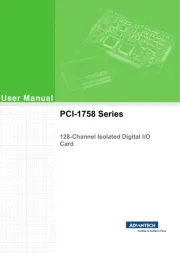
30 Juli 2025
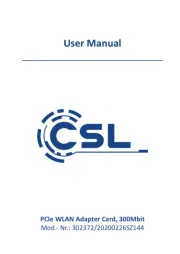
30 Juli 2025
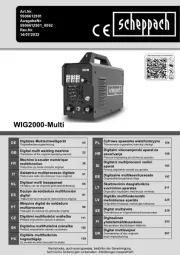
30 Juli 2025
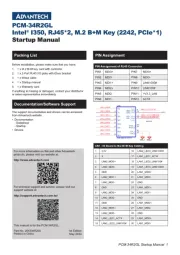
30 Juli 2025
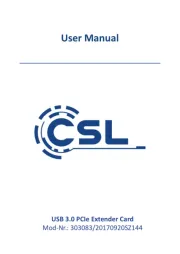
30 Juli 2025
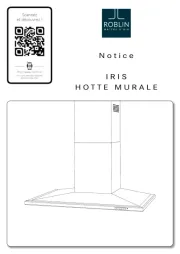
30 Juli 2025
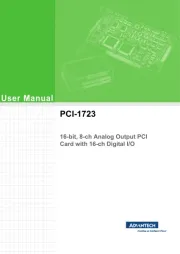
30 Juli 2025
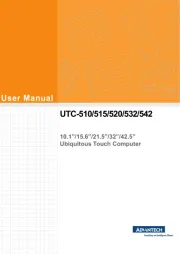
30 Juli 2025
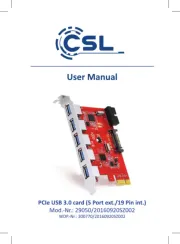
30 Juli 2025
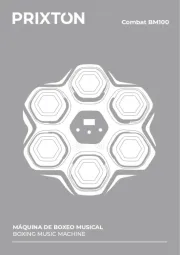
30 Juli 2025